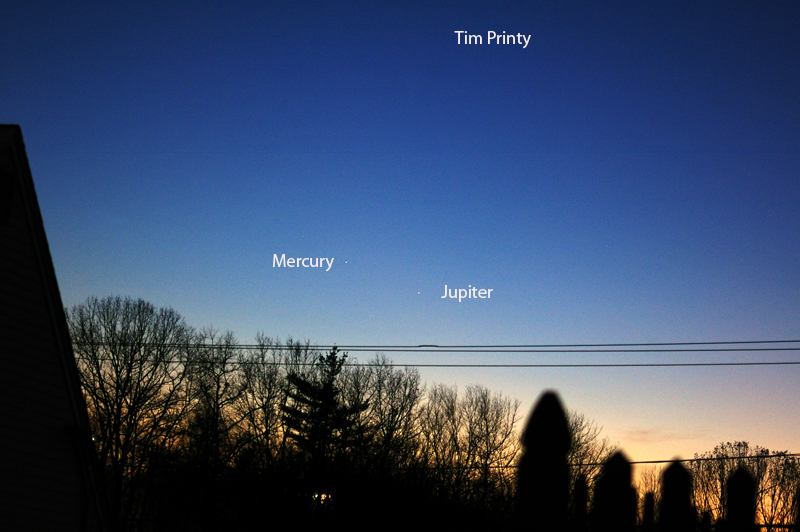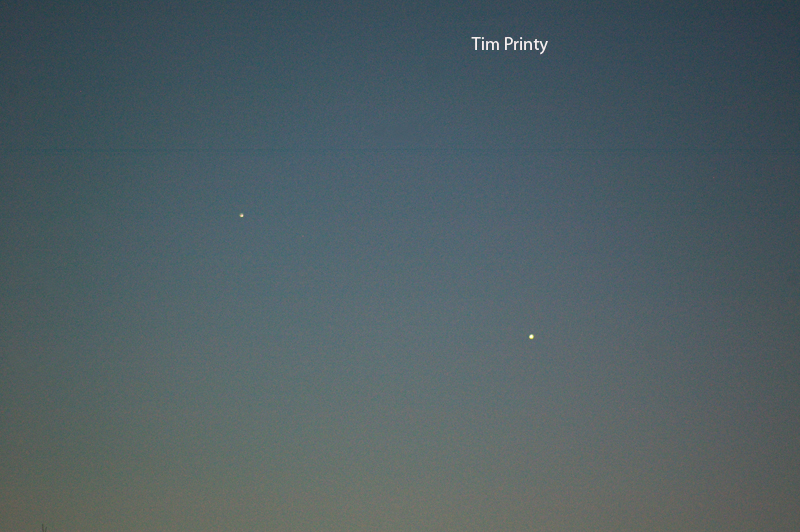
Mercury
The hardest of the nake eye planets to locate is Mercury. Mercury is only visible shortly before sunrise or after sunset. The best time to look is at elongations of the planet. These occur at intervals of about every 4 months between each evening/morning elongation. The best time for evening elongations are in the spring for the northern hemisphere, when the ecliptic is at a high angle. Mercury often can be seen in a dark sky on those dates with a clear horizon. For the morning elongations, it is best to view in the fall. Again the ecliptic is favorable for the northern hemisphere during that time period. I took the following pictures on January 1, 2009 of the planet Mercury (upper left) and Jupiter (lower right). The first shot is a 1/30th second exposure using a 70mm lens (Pentax digital SLR) and the second is the same exposure time with a 300mm lens.


Like Venus, Mercury goes through phases because it's orbit is inside the Earth's. Obtaining images of these phases is difficult because Mercury is so small, close to the sun, and low to the horizon. The best time to image the planet is to locate it in daylight with a computerized scope and then image the planet when it is high in the sky.
Transits of the sun by Mercury are more common than Venus. The next transits are May 9, 2016 and November 11, 2019 and both are visible from the United States. After that, you will have to wait until 2049 for the next event favorable for our hemisphere.